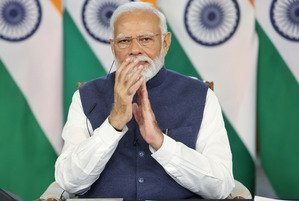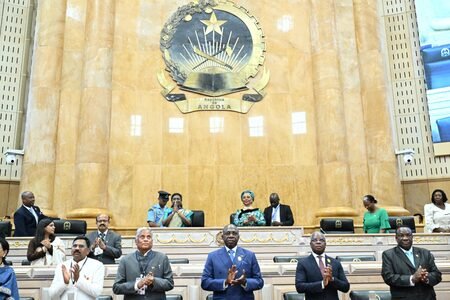
New Delhi, Feb 29 (IANS) Growth rate under Congress-led UPA I and UPA II and BJP-led NDA era is a debatable issue, as both parties have gone at great lengths to brag about landmarks and milestones achieved under the respective regimes.
Here is an insightful analysis, based on hardcore data analysis, which compares the growth charts in last 10-15 years, with specific attention to Parliamentary constituencies and also district to sub-district levels and also concludes, which era ‘got the better of whom’ in terms of growth.
Shamika Ravi, a member of Economic Advisory Council to Prime Minister, has taken a deep dive and done a comprehensive analysis by mixing two data sets. Her research titled ‘Politics in Action’ has collated day-time satellite data for built-up area under Parliamentary constituencies and compared it with data sourced from Election Commission, to map the growth under UPA and NDA governments.
BJP-led NDA wins the comparison hands down, as it is found to have nurtured fast-paced growth and spurring economic activity in remote and far-off locations, ‘neglected’ under the UPA 1 and UPA 2.
The day-time satellite imagery data studied growth rates from Parliamentary constituency to sub-district levels and found 18 per cent higher growth rate under Modi government.
The day-time satellite imagery data captured the built-up surface area, under Parliamentary constituencies, at extremely high resolution. The growth of built-areas including roads, building, commercial establishments and other units of infrastructure were studied for drawing conclusions on ‘high growth rate’.
When the average growth was compared across Parliamentary constituencies, it was found to be 3.3 per cent annualised growth in NDA rule (2015-2023) as compared to 2.8 per cent during UPA rule.
On question of ‘which Parliamentary constituency grew the most’, the research found that growth was more widespread under Modi govt as more ‘green spots’ of growth were recorded across the country, North in particular.
It further found that year 2015-2020 saw fastest growth in some of most backward and underdeveloped part of the country.
“Under NDA, highest built up area growth happened in least developed parts of country. Those constituencies, rural and remote in nature, recorded highest annualised growth,’ the research found.
Comparing the growth on district levels, the research found that it was 21 per cent higher under Modi government as compared to UPA 2 while it was 31 per cent higher in comparison to UPA 1.
At the sub-districts level also, 31 per cent greater growth was recorded under NDA, compared to UPA – II while 21 per cent higher growth under NDA was recorded, as compared to UPA- I.
Overall, the study finds that economic activity, under Modi government was more focused on least developed parts of the country, which either lagged behind or remained of least priority, during UPA 1 or UPA 2 rule.
On inequality factor too, the study finds that NDA government was more effective in bringing economic dynamism in backward regions.
Economist Shamika Ravi further said that the day-time data, used for drawing the ‘comparison chart’, is irrefutable as it maps the real-time changes on the ground.
“District and sub-district level data, over last 10 years, was studied to see changes under different regimes, with extremely localised analysis,” she added.








